How Do 3D Printers Work: 3D printers use digital models to guide materials layering, constructing objects one layer at a time. This technique, known as additive manufacturing, allows for precise, customizable creations, ranging from intricate designs to functional prototypes.
The 3D printing market is projected to grow from USD 27.52 billion in 2024 to USD 150.20 billion by 2032.
With extensive experience in the field, I’ve witnessed how this technology can revolutionize both personal and business applications. In this post, I will share my 3D printing experience and try to explain how they work.
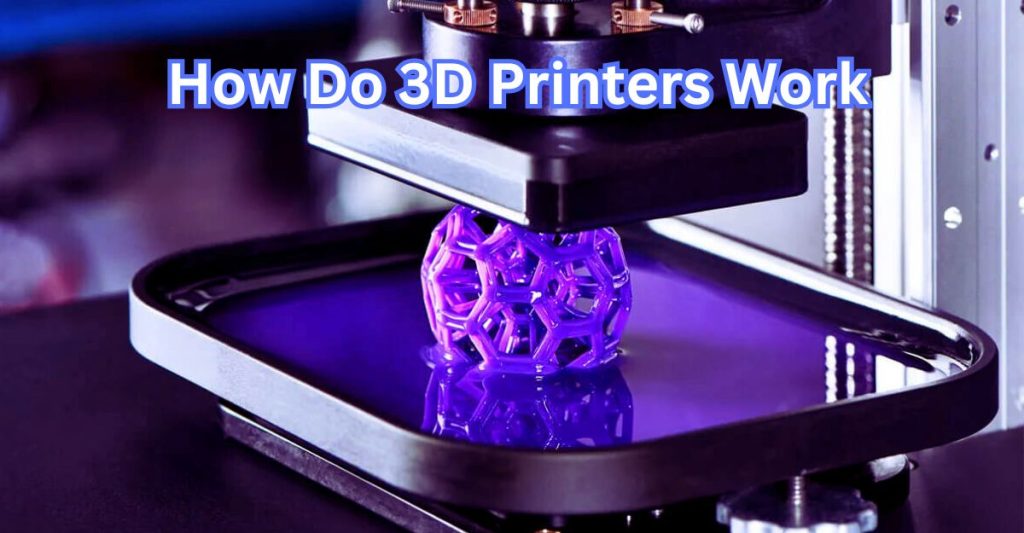
Let’s Learn the Basics of 3D Printing
What is 3D Printing?
3D printing, or additive manufacturing, involves layering materials to create three-dimensional objects. 3D printing builds objects layer by layer, delivering unmatched precision and customization.Traditional manufacturing often requires molds or cutting away material.
In recent years, the manufacturing industry has seen substantial growth in 3D printing. Consequently, as we approach 2024, this technology is becoming an integral part of production processes. Moreover, it complements traditional methods and paves the way for hybrid manufacturing.
Hybrid manufacturing approaches combine additive and traditional manufacturing strengths, resulting in enhanced efficiency and innovation. If you want to make money from a 3D printer, mastering these hybrid techniques can open new business opportunities and boost your profits.
There is increasing recognition of the potential of 3D printing in manufacturing across a wide range of industries.
With its capabilities for driving forward creativity and operational efficiency, this transformative technology promises a promising future. This makes 3D printing not only a complementary tool but also a catalyst for manufacturing.
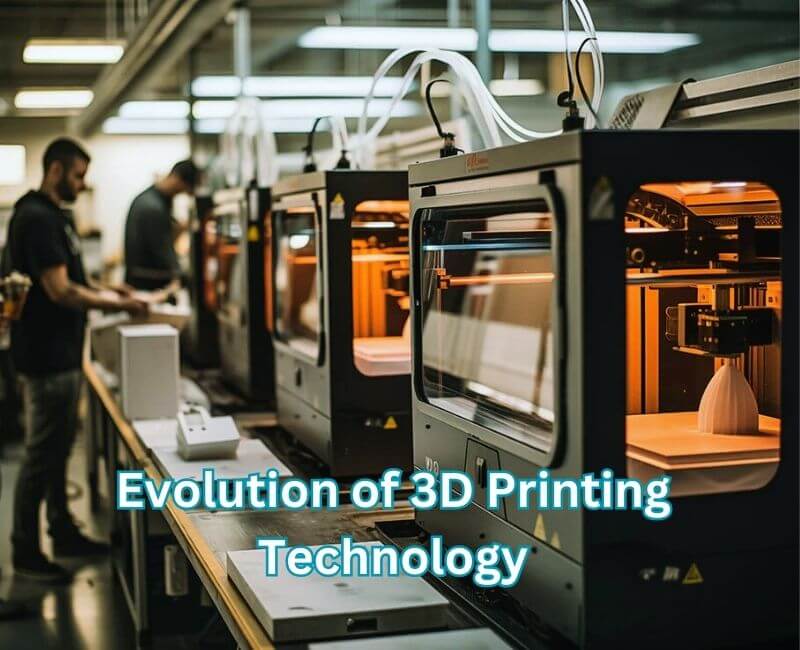
The Evolution of 3D Printing Technology
Three-dimensional printing began in the early 1980s to create models from digital data and help with rapid prototyping.
Early pioneers included Dr. Hideo Kodama and Charles Hull. Hull developed Stereolithography, enabling people to quickly transform digital ideas into physical objects, speeding up innovation and reducing development time.
Originally, designers used 3D printing to simplify product development. However, today, industries such as medicine, aerospace, and architecture widely utilize it. Moreover, this technology can print with a variety of materials, including plastics, metals, and even biomaterials.
3D printing is an essential part of manufacturing today. Traditional methods cannot produce custom parts or complex designs as cost-effectively. As technology improves, industries will evolve their manufacturing processes, fostering innovation across a broad range of fields.
How 3D Printers Operate
The Layer-by-Layer Process
Using 3D printing, digital designs are turned into objects layer by layer. CAD software is used to create a 3D model. Models are blueprints that detail every aspect of objects, helping you get the most from the best 3d printer for small business setups.
A number of horizontal layers are then added to the model. The slices tell the 3D printer how to build the object from the bottom up.
During printing, the printer adds layers of material one by one. It uses plastic, resin, or metal powder. The printer fuses or hardens each layer, allowing it to create complex shapes that traditional methods cannot produce.
Layer-by-layer production produces customized items with little waste. As a result, the final product is detailed and strong, with every layer fitting perfectly.
Key Components of a 3D Printer
Understanding a 3D printer’s parts helps explain how it works. Here’s a quick look at each component:
- Print Bed: The object is built here. Leveling and sometimes heating are necessary to ensure the first layers stick well and do not warp.
- Hotend: The filament is melted so that it can flow out of the nozzle. For smooth flow, the hotend must maintain the right temperature.
- Motherboard: The controller is the printer’s brain. To create the object, it reads digital instructions and moves the parts.
- Stepper Motors: Precision motors move the print head and bed. By converting electrical signals into precise movements, they build the object layer by layer.
- Nozzle: It directs melted material onto the print bed from the hotend. Printing detail and speed are affected by nozzle size.
In order to turn digital designs into real objects, these parts work together seamlessly. First, the motherboard guides all the steps. Next, the hotend, the nozzle, and the stepper motors build the design layer by layer. As a result, this teamwork allows 3D printers to create detailed designs, demonstrating the power of additive manufacturing.
Types of 3D Printing Technologies
Fused Deposition Modeling (FDM)
Fused Deposition Modeling (FDM) is a popular 3D printing technique. For hobbyists and professionals alike, it’s simple and versatile.
First, the FDM process involves melting thermoplastic filament and pushing it through a heated nozzle. Next, layer by layer, the printer builds up the object by laying down the material on a platform. Finally, the process continues until the model closely matches the digital design.
The cost-effectiveness of FDM lies in the use of cheap materials like ABS and PLA. The ease of use and maintenance of these printers make them popular in a variety of industries.
Not only is FDM used for prototyping, but it can also create custom prosthetics, educational models, and end-use parts. Moreover, its precision makes it essential for 3D printing, as it enables the creation of complex shapes. With technology continuously advancing, FDM now offers even more materials and applications.
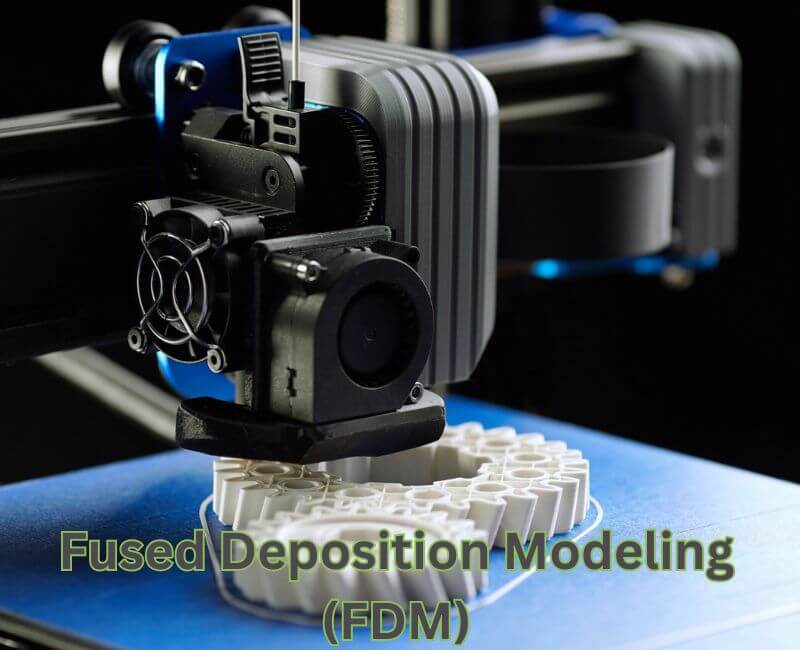
Stereolithography (SLA)
Stereolithography, or SLA, is a leading method for 3D printing known for its precision and quality. The process of photopolymerization uses a laser to turn liquid resin into solid objects. UV lasers harden resin layer by layer by drawing on its surface.
With SLA, you can create intricate, smooth parts with minimal lines, like those for jewelry, dentistry, and prototyping.
Different resins can mimic materials such as rubber and ceramic, expanding the application of SLA.
With resin options and printer capabilities improving, SLA continues to be a key player in 3D printing, providing unmatched detail and craftsmanship.
Selective Laser Sintering (SLS)
In Selective Laser Sintering, layers of polymer powder are melted together by a laser, resulting in solid and detailed objects.
A unique feature of SLS is its ability to create complex shapes without the need for extra support. During printing, powder surrounds the part, preventing it from moving around.
A common use of SLS is in industries such as automotive, aerospace, and healthcare. SLS prints a wide range of materials and can be customized to meet various needs, making it a versatile and reliable 3D printing method.
Choosing the Right 3D Printer
Home vs. Industrial Printers
3D printers are available for both home and industrial use. Understanding their benefits and uses can help you decide which is right for you.
Home 3D Printers
With 3D printers, you can create small items and prototypes from the comfort of your own home. They are great for learning and experimenting without spending a lot of money.
Industrial 3D Printers
3D printers for the industrial sector are designed to handle larger, more complex tasks. In industries like aerospace and automotive, where quality and detail are crucial, these printers produce more significant parts with great precision. They are also efficient and can handle large-scale production.
Key Differences
A home printer is budget-friendly and straightforward, but industrial printers are powerful and precise for professional applications. 3D printers are suitable for hobbyists and professionals alike.
Materials Used in 3D Printing
Many types of materials are used for 3D printing. Here are a few of the most common ones:
Plastics
In 3D printing, plastics are very popular. PLA is easy to use and biodegradable, making it ideal for beginners. ABS is strong and durable, perfect for toys and car parts. Nylon is flexible and corrosion-resistant, ideal for durable parts.
Metals
Aluminum’s versatility and corrosion resistance make it a common choice for car and industrial parts. Titanium is strong and lightweight, making it ideal for aerospace and medical implants.
Resins
Different types of resins offer different properties, such as flexibility and toughness, making them a great choice for jewelry and dental models.
In order for your 3D printed project to be successful and meet your needs, the right material is essential.
Examples of 3D Printing
Below is a table showcasing diverse real-world applications of 3D printing across various industries:
| Industry | Application | Example Use |
| Healthcare | Prosthetics and Implants | Customized prosthetic limbs |
| Dental Applications | Dental aligners and crowns | |
| Automotive | Spare Parts | Custom car parts and prototypes |
| Design and Testing | Concept models and testing equipment | |
| Aerospace | Aircraft Components | Lightweight and durable parts |
| Engine Parts | Complex, high-performance components | |
| Consumer Goods | Custom Jewelry | Personalized rings and bracelets |
| Fashion Accessories | Tailor-made shoes and eyewear | |
| Construction | Building Structures | 3D-printed houses and bridges |
| Emergency Shelters | Quick assembly shelters for disaster relief | |
| Pharmaceuticals | Drug Development | Personalized medicine and pills |
As these examples demonstrate, 3D printing can transform traditional manufacturing processes and open up new avenues for innovation and customization.
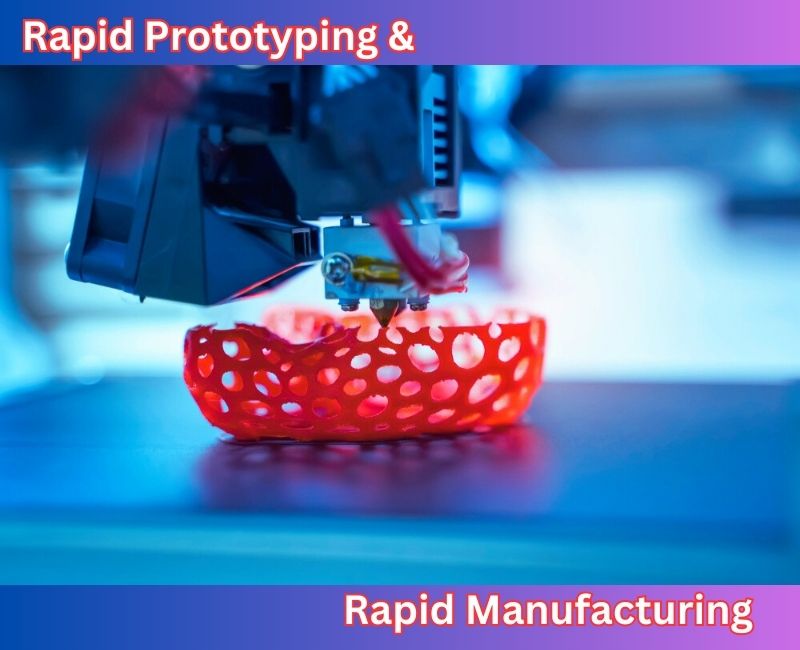
Rapid Prototype & Manufacture
Rapid prototyping enables the quick conversion of digital designs into physical models. This method is cost-effective, reducing the risk of costly mistakes. It accelerates the design process, enabling rapid testing and improvements. Designers commonly use it to test fit and strength by creating mockups.
It allows companies to respond quickly to market changes and implement design updates with rapid manufacturing. This approach is ideal for short production runs and custom products. It lowers costs and provides flexibility in production. Businesses can deliver products to market faster and remain competitive if they use rapid manufacturing.
Industries Using 3D Printing for Various Purposes
Using 3D printing to solve complex problems is revolutionizing many industries.
Aerospace
In aerospace, 3D printing makes lightweight, strong parts that reduce aircraft weight and reduce fuel consumption.
Automotive
With rapid prototyping, 3D printing enhances vehicle performance and personalization by speeding up design and testing.
Healthcare
Healthcare uses 3D printing to create prosthetics and implants, improving comfort and ease of use. Researchers are also exploring tissue and organ printing.
Construction
As a result, 3D printing can speed up construction, reduce material waste, create affordable housing, and assist with emergency shelters.
In these examples, 3D printing is helping industries innovate and improve their processes.
Unique Applications of 3D Printing
There are countless uses for 3D printing. In music, 3D prints can create custom instruments with unique sounds. Chefs can print food designs that are transformed into works of art. Artists can create stunning installations that reshape creativity.
Beyond Prototyping: Real-World Uses
3D printing is making a real impact in many industries.
Construction
Construction companies utilize 3D printing to expedite construction and lower costs.
Healthcare
3D printing allows healthcare professionals to create custom prosthetics and implants tailored to each patient’s needs.
Automotive
Manufacturing car parts with 3D printing allows for quick prototyping and customization, enhancing vehicle performance and design.
In these examples, 3D printing goes beyond prototyping to solve real-world problems.
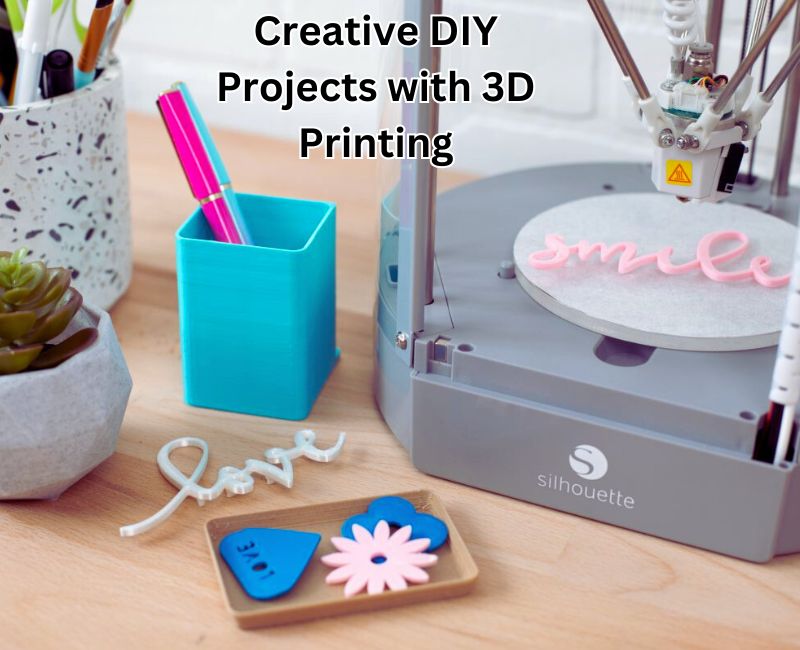
Creative DIY Projects with 3D Printing
Make customized key hooks to keep your keys organized and add a personal touch to your decor. Create unique drink coasters that impress your guests and protect your furniture. 3D printing offers endless possibilities for home enthusiasts. You can create a tool organizer to keep your workspace clean and your tools easily accessible. These creative yet straightforward ideas demonstrate how you can transform everyday items into personalized treasures.
Challenges and Considerations
Common Limitations of 3D Printing
3D printing is a powerful tool, but it does have some limitations that users should be aware of.
Print Time
A 3D printer requires a lot of time to create even small objects, which can slow down productivity. This is especially true for projects that require quick turnarounds or large quantities.
Material Limitations
Plastics and some metals dominate 3D printing, while limited access to wood and glass restricts the range of products manufacturers can create.
Accuracy
With 3D printing, precision can sometimes be difficult. The layer-by-layer process can sometimes lead to surface imperfections or dimensional inaccuracies. This can negatively impact the quality of the final product.
3D printing projects can be planned more efficiently by understanding these limitations.
Improving Print Success Rates
Boosting your 3D print success involves a few simple steps:
1. Proper Calibration:
Ensure your printer is well-calibrated. Level the build plate regularly and adjust the extruder tension to avoid errors.
2. Optimize Slicer Settings:
Adjust the layer height, speed, and temperature on your slicer for optimal quality. Test and adjust for each material.
3. Use Quality Materials:
It is essential to use high-quality filaments and resins for your prints to prevent issues such as clogging.
4. Regular Maintenance:
Ensure your printer is in good working condition by cleaning the nozzle, inspecting parts, and lubricating moving parts regularly.
5. Troubleshoot Common Issues:
Understanding common problems like warping and stringing can save you time and improve your results.
By following these tips, you can achieve smoother and higher-quality 3D prints.
The Future of 3D Printing
Emerging Trends and Innovations
The next ten years will be an exciting time for 3D printing. AI will enhance the efficiency of design and production, enabling the creation of more detailed and complex products.
In the future, bioprinting could be used to print organs and tissues, potentially significantly reducing the need for organ donations.
Materials that are sustainable and eco-friendly will become increasingly common, leading to greener manufacturing practices.
By increasing the printing speed, many items can be produced quickly, thereby reducing production costs.
The use of 3D printing can also alter supply chains by enabling local production. This reduces inventory levels and shipping time, making processes more efficient.
Many industries will benefit from 3D printing in the future.
The Impact of 3D Printing on Various Industries
Using 3D printing, complex parts can be manufactured easily, allowing for faster production and lower costs.
Using 3D printing in healthcare, one can create personalized prosthetics and implants. It can also be used to make exact models for surgeries, improving patient care.
There is also a shift in retail with 3D printing, which enables on-demand production, customized items, and niche products that cater to the unique needs of consumers.
In general, 3D printing creates new opportunities and changes, making industries more flexible and innovative.
FAQs: How Do 3D Printers Work
1. What is 3D printing?
Through 3D printing, objects are created by layering materials. A digital model is used to guide the printer.
2. What are the main types of 3D printing?
Objects can be created in different ways using FDM, SLA, and SLS.
3. How does FDM work?
Layer by layer, FDM lays down plastic. It’s affordable and straightforward.
4. What is SLA?
Using SLA, liquid resin is hardened into layers using a laser. The objects are smooth and detailed.
5. What materials do 3D printers use?
Depending on the printer and usage, they use plastics, resins, metals, and more.
6. What are common uses for 3D printing?
Designers and engineers use it for custom parts and designs in prototypes, manufacturing, healthcare, and the arts.
7. How accurate are 3D prints?
As for accuracy, SLA is very precise, while FDM is good for basic tasks.
8. Is 3D printing eco-friendly?
Using only what is needed reduces waste in materials and energy.
9. Can 3D printers make working parts?
Depending on the materials and design, they can create functional items.
10. What is the future of 3D printing?
A better material and faster printing will become more common in our daily lives and manufacturing processes.
Wrapping Up
3D printing builds objects from digital models by adding layers one at a time. Many industries, including healthcare and automotive, use it. 3D printing creates unique, detailed designs. As 3D printing advances, it delivers further innovations and greater precision. It boosts manufacturing and everyday use, increasing creativity and efficiency.
Read more on this sites
- How to Convert Images to 3D Models for Printing
- Using Photos for 3D Printing: A Complete Guide
- What is 3D Printing Lithophane and How to Make One
- Step-by-Step Guide to 3D Picture Printing
- How to Convert Pictures to 3D Prints Easily
- Convert 2D Images to 3D Models for Printing
- An Overview of the Anycubic Kobra 2 Max Enclosure
- Top Upgrades for Your Anycubic Kobra Max 3D Printer
- Detailed Review of the Anycubic Kobra Max 3D Printer
- Full Dimensions Guide for Anycubic Kobra 2 Max
